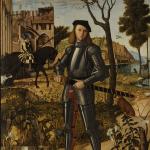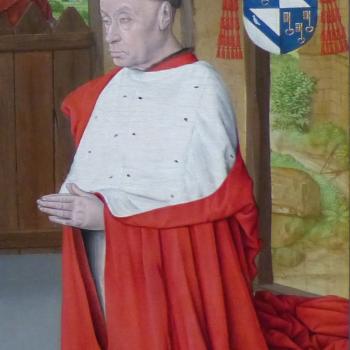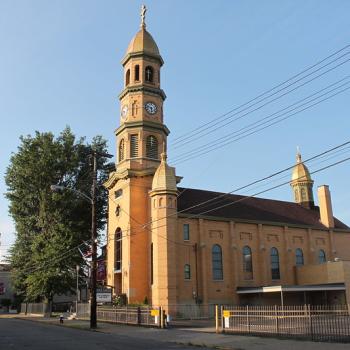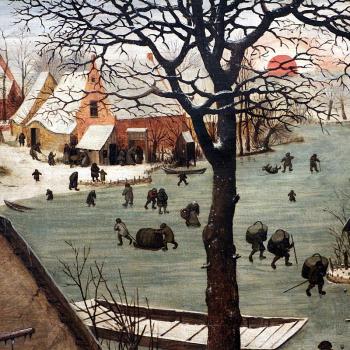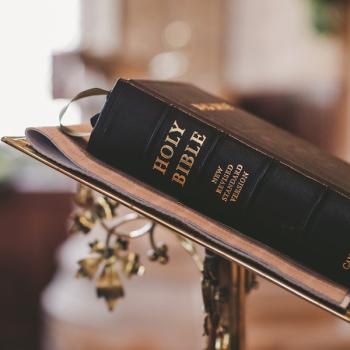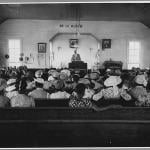Having finished his long and poetic introduction, Leo at last comes to the matter at hand. Given this clear teaching of Scripture, he is “violently stupefied […] that thus priests of the Church should have slept” (V) so as to follow the path of division rather than that of peace. What Leo of Ohrid and Michael Cerularius have done, Pope Leo says, is to “openly condemn the apostolic and Latin Church, neither heard nor convicted, with novel presumption and incredible audacity” (IV). By doing this, they have overturned and violated the peace and unity of the Church, and acted just like heretics: “Behold, your incautious hatred, behold your inglorious boasting, when […] with human arguments and conjectures you labor to pierce through and overturn ancient faith” (IV). They have acted so as to disturb the peace and unity of the Church, based merely on human arguments.
As for their arguments themselves, Leo is dismissive: “Behold, now, after one thousand and nearly twenty years from the passion of our Savior, the Roman Church begins to learn how the memorial of his passion is to be celebrated from you!” (IV). The idea that Christ and St. Peter would not have taught the Roman Church how to correctly celebrate the Eucharist, Leo believes, is simply absurd beyond belief. After all, St. Peter is the Rock of the Church, the man to whom the Father specially revealed the confession of his Son, the man to whom Christ promised that his faith would not fail; and as the Successor of St. Peter, Pope Leo IX has inherited Peter’s authority and prerogatives, making the Church of Rome the First See of the entire Church, tasked with the care of all. In arguing for this point, Leo makes appeal to the incipient doctrine of Papal infallibility, arguing that “the Holy Church was founded […] upon Peter […] in such a way that it will never be overcome by the gates of Hell” (IV), so that “the comments of all heretics have been reprobated, convicted, and fought against by the See of the Prince of the Apostles” (IV), and the faith of the Roman Church “even till now has not failed, nor will fail even to the end” (IV).
So as to contrast the authority of their two respective sees, Leo then proceeds, in an extremely undiplomatic fashion, to enumerate all of the heretical Patriarchs of Constantinople, from the first to the most recent. With only a few exceptions, Leo’s listing would be seen as accurate not only from a Western, but also from an Eastern point of view. Indeed, in most of the schisms between Rome and Constantinople from the 4th to the 9th centuries, Constantinople would later agree that Rome had been in the right; and Pope Leo capitalizes on this fact unmercifully. Yet the greatest exception to this rule is the one that Pope Leo pushes the hardest; namely, the assumption by the Patriarch of Constantinople of the title Ecumenical Patriarch in the 6th century, a title against which Pope Gregory I had protested, but which the Patriarchs of Constantinople had continued to use anyway. Leo considers this title detestable and arrogant, and he argues his position in the very strongest and least charitable of terms: “Is it by the example of our Lord Jesus Christ that you are prepared to place your souls before your brothers, you who after so much time do not wish to lay down that inane name, scandalizing the unity of the whole Church with your insolence?” (IX).
Finally, Leo returns to Cerularius’ actions, and expresses his anger in the burning words of a zealous reformer: “You are so blinded by [your] incautious, shameless arrogance that you do not notice what you are doing, and who you are, and to whom you do it” (X). By closing the Latin Churches in Constantinople, Cerularius has acted like his heretical predecessors, and completely unlike the Roman Church, which encourages Greek Churches and monasteries to operate unhindered in its territory: “For she knows that diverse customs of believers for place and time are no obstacle to salvation, when one Faith working through love whatever good things are possible commends all to the one God” (XXIX). Indeed, by doing as he has done, Cerularius has excommunicated himself. In this, Pope Leo appeals to an ancient Western principle, which he falsely attributes to the First Council of Nicaea, to the effect that the judgments of the Roman Church are not to be judged or condemned by any other body—a principle that Cerularius would hardly have been familiar with. In defending this principle, Pope Leo also has the dubious distinction of being the first Pope to quote the Donation of Constantine, a forgery created a few centuries before, in an official document. Yet Pope Leo thinks this document less important than what he considers to be the Scriptural and traditional evidence for the Papacy, evidence which means that the faith and decrees of the Roman Church should never be judged or condemned by her Eastern brethren.
Thus, through these letters, a little of each side’s perspective in this controversy is made clear. The perspective of Cerularius and of his associates is that the West has erred grievously in adopting corrupt customs contrary to divine law and the Scriptures; thus, the Western Church must move to correct these customs at once, with the help and guidance of the Eastern Church and her more ancient traditions. The perspective of Pope Leo and his associates is that Cerularius has wrongfully attacked the peace and unity of the Church by presuming to judge ancient customs and faith based on merely human arguments and conjectures; thus, he must immediately repent of his condemnation, and restore peace to the Church by submitting to the divinely-authorized judgment of the Papacy in these matters, acknowledging that mere differences in custom are no threat to divine faith.


